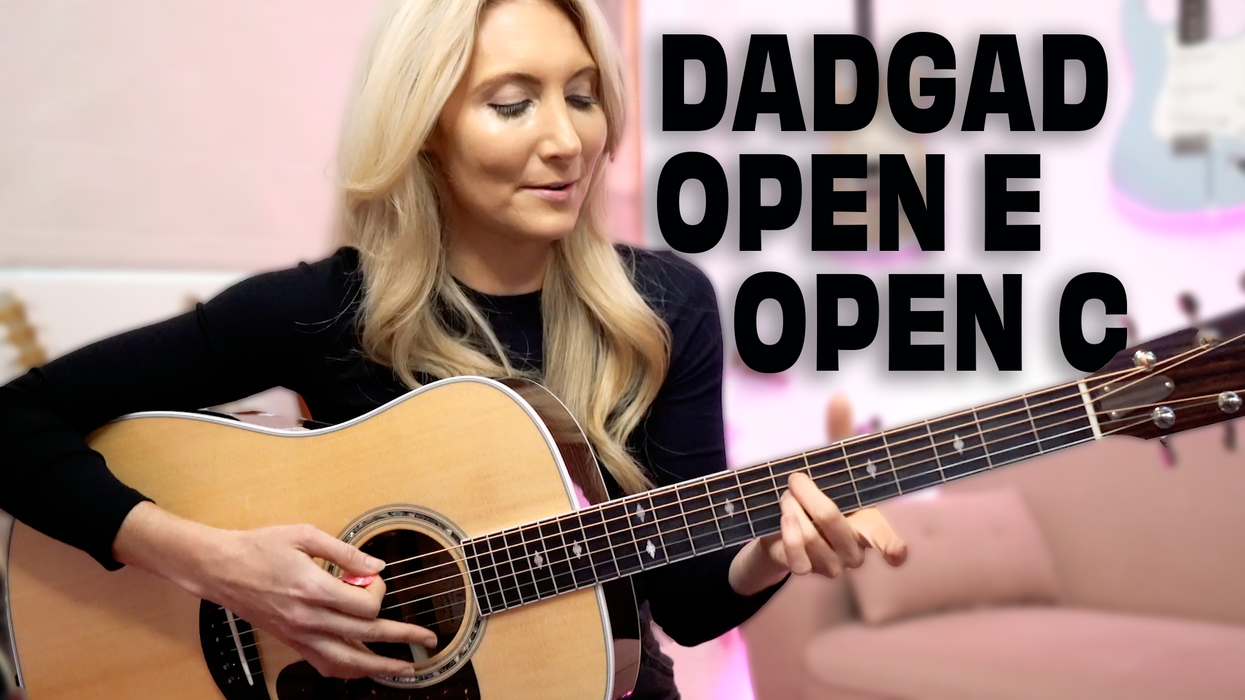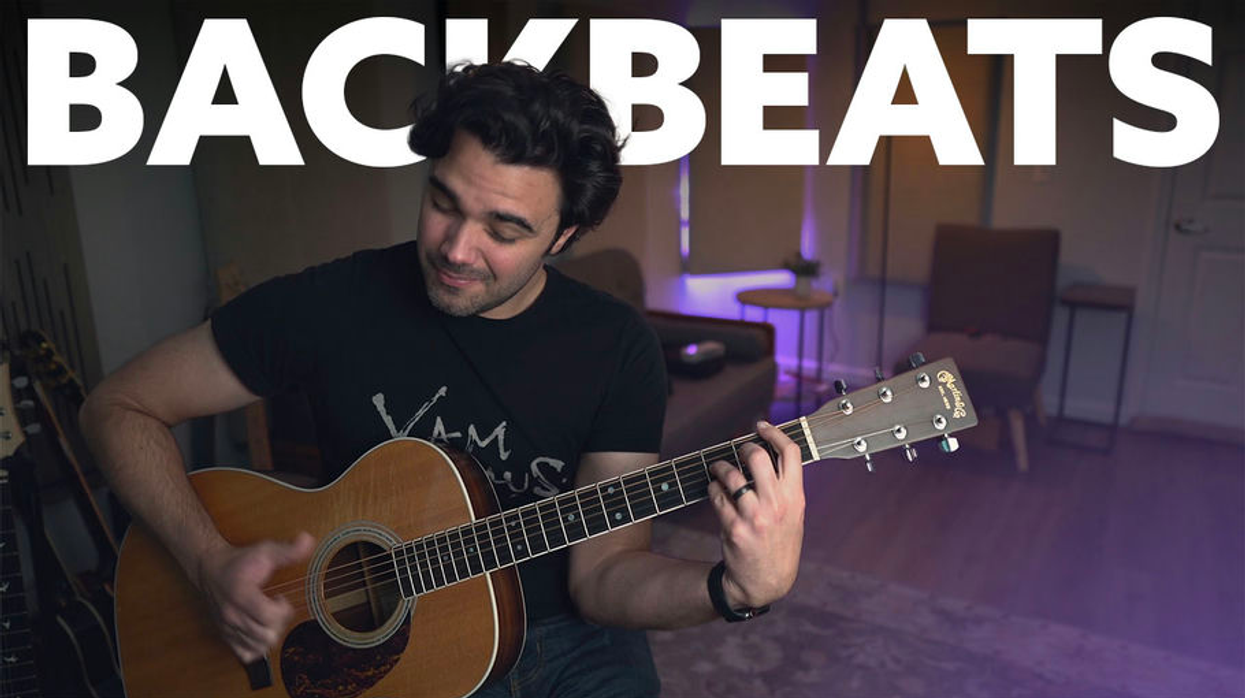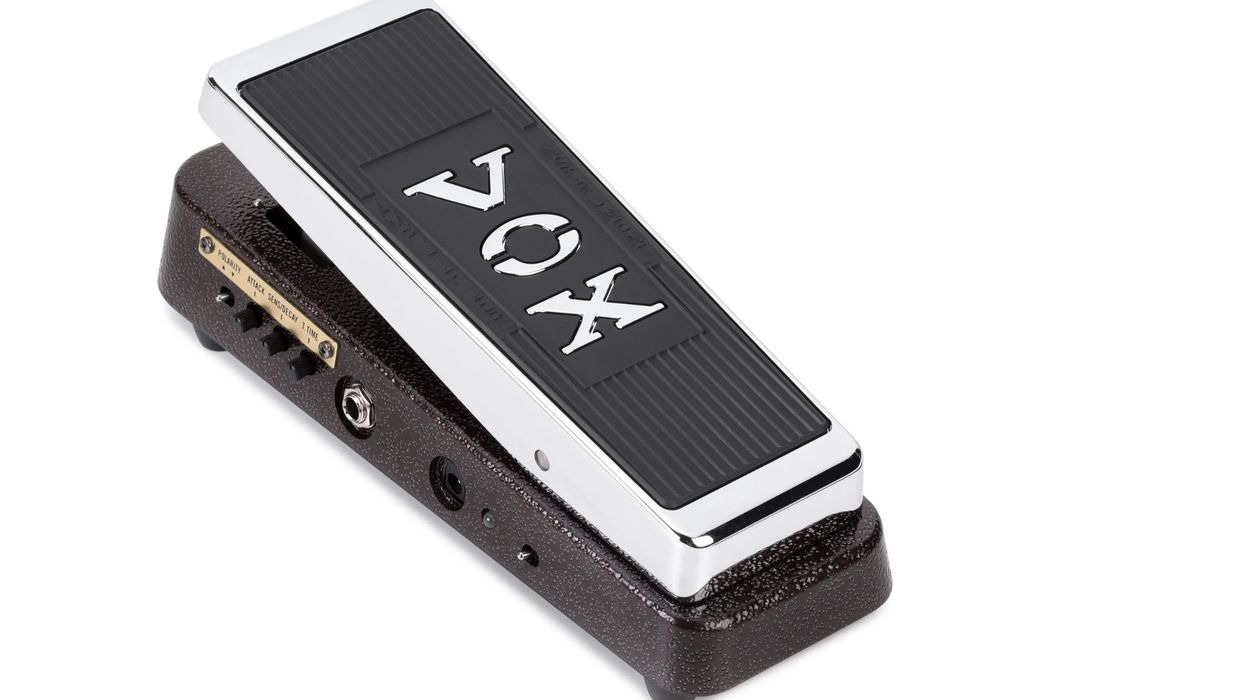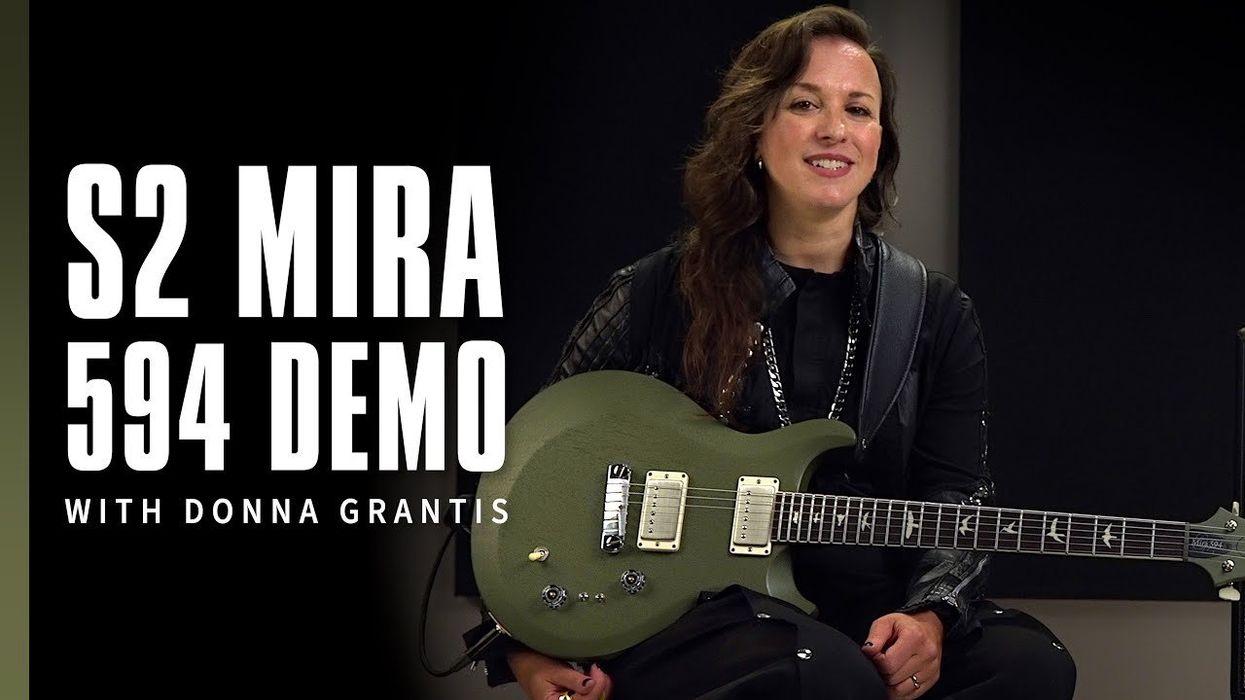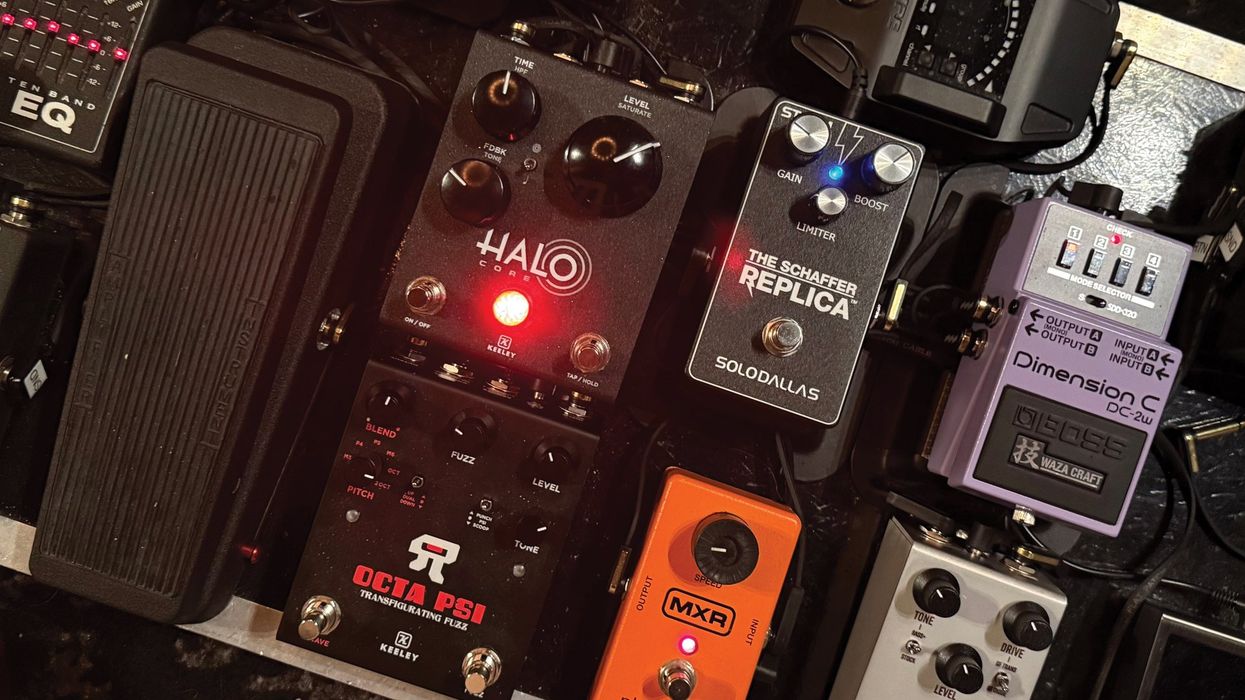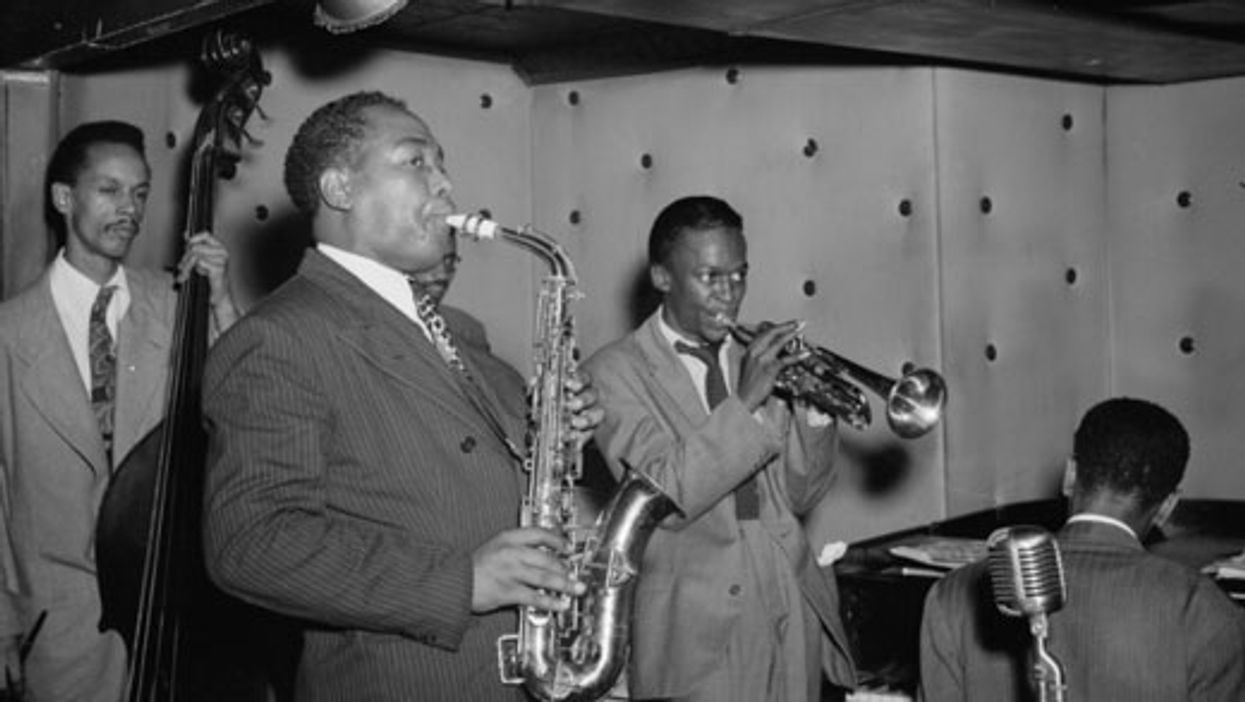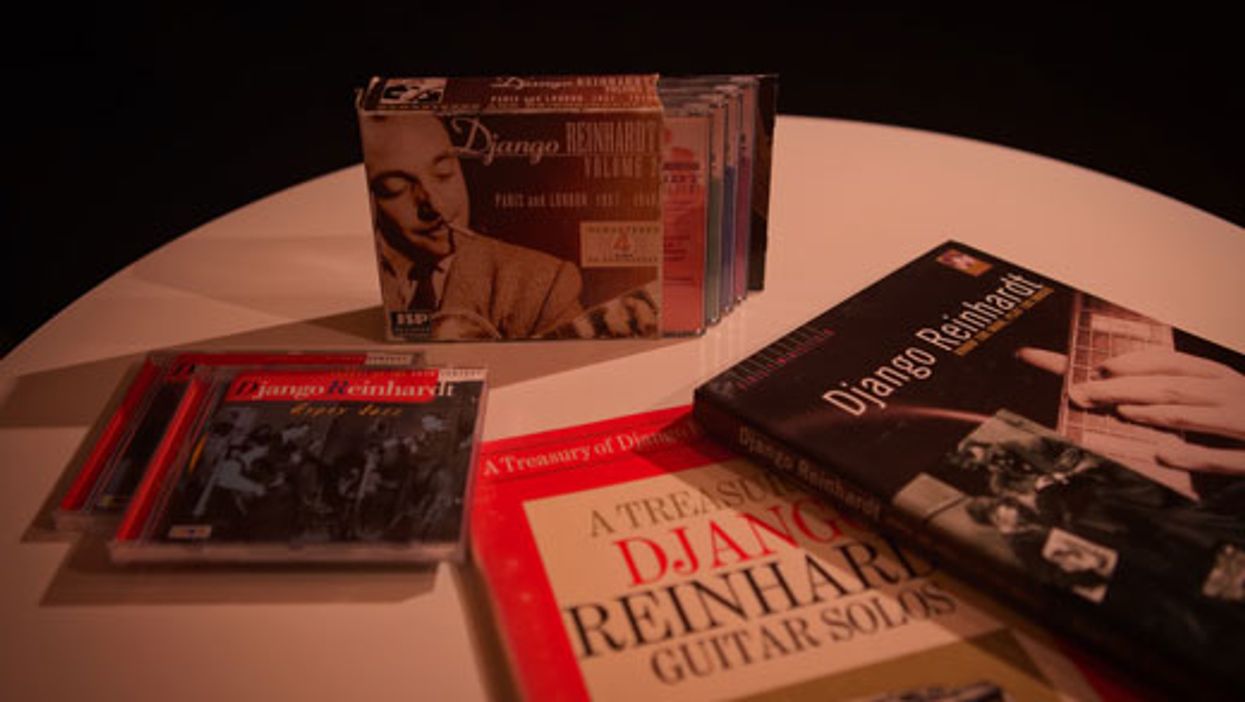Dave Matthews’ songwriting encompasses a vast array of styles, but along with his voice and an eclectic cast of musicians (namely the Dave Matthews Band), what most defines his sound is his singular guitar style. When I first became aware of DMB, I assumed Matthews’ playing would be along the lines of other singer/songwriter projects of the era—mainly open-position and barre chords, some fingerpicking, and possibly a few alternate tunings. But I would soon discover just how wrong I was.
Wait, He Plays That and Sings?
Let’s begin with the song which introduced Matthews to much of the world, “What Would You Say,” from his 1994 breakthrough album Under the Table and Dreaming. With a mix of chords, slides, and a sly bend, its main riff is a bit of a juggling act, especially when you consider he continues playing the same figure as he sings. When writing songs, it often seems as if Matthews is simultaneously thinking like a guitarist and a drummer. Often, if you simply bang out the rhythm of his guitar parts, they make for compelling drumbeats. Ex. 1 is based on the song’s intro.
On this album, Matthews also showcased other approaches which would become hallmarks of his playing. His frequent use of single-note riffs is unique for an acoustic guitarist, and he does this in both ballads and rockers. In “Satellite,” Matthews begins to show his deep connections with chords, as here he plays a single-note line, but it’s based on power chords (root and fifth) throughout. Ex. 2 brings to mind the song’s main riff.
Matthews continues the same approach in the next example, but extends the concept to full triads (root, 3, 5). Ex. 3, based on “Rhyme & Reason,” is still only comprised of single notes, but here, each of the first three chords is outlined in second inversion, meaning the lowest note is the 5 of the chord. The last two dyads, Bb and C, feature the interval of a major 10th, which is simply a major third with an additional octave separating its two notes.
Matthews also likes to use chords that feature both the 3 and the 10th, such as in “Ants Marching.” Ex. 4 is based on its chorus progression. Note how the initial G chord has the 3 (B) twice, in two different octaves.
Drones — But Not That Kind
Let’s have another look at that 10ths shape, as Matthews uses it quite often, especially when strumming — but he often adds a twist. For example, Ex. 5 is an infectious groove based on “Tripping Billies” from DMB’s second album Crash. In this song, he uses 10ths (major and minor) but adds the open 4th string to each one, which acts as a drone. We’re in the key of D major, where D functions as a chord tone for each chord, save one. In the Aadd4, it acts to contribute some welcome tension as its added 4th.
Matthews used the same sort of drone concept in one of his most-loved songs, “Crash Into Me,” and Ex. 6 is based on its main chord progression. The difference here is that a full E5 chord functions as a multi-note drone against a moving bass line.
Keeping Us on Our Toes
Matthews often writes songs in time signatures other than the well-worn 4/4 and 3/4, for example, his use of 6/8 in the song “Drive In Drive Out” from Crash. In 6/8 time, there are three eighth-notes to a beat, felt as if they were a triplet in 2/4. Ex. 7 is based on the song’s main riff.
On 1998’s Before These Crowded Streets, Matthews pushes the envelope even further with “Rapunzel,” which is in the odd time signature of 5/4 (“odd” referring to the use of an odd number of beats). In addition, he also adds a bit of rhythmic intrigue in the form of syncopation—accenting the weaker parts of a beat. Ex. 8, based on the song’s opening riff, features syncopation in its initial 16th-note pick-up, as well as in its final two beats. To get the rhythm more easily under your belt, try singing the riff a few times first. This will make for a quicker transition to guitar.
Take Away the Pick and It’s Still Dave
The title track to the DMB album Everyday features Matthews ditching his pick and playing fingerstyle. Though he seldom does this, he still thinks like a drummer, creating a memorable guitar part which, not surprisingly, includes some syncopation. Ex. 9 is inspired by the song’s intro.
“Here on Out,” from 2018’s Come Tomorrow, also finds Matthews fingerpicking. Ex. 10, reminiscent of the song’s verse guitar part, revisits his use of multiple drones with a moving bass line.
With seldom-used chord forms, darting single lines, and an emphasis on rhythm, Dave Matthews has written unique and memorable songs for over 30 years. And with the extended versions he regularly performs with DMB, he seems to endlessly search to make them even more so, as he breathes new life into them each night.


